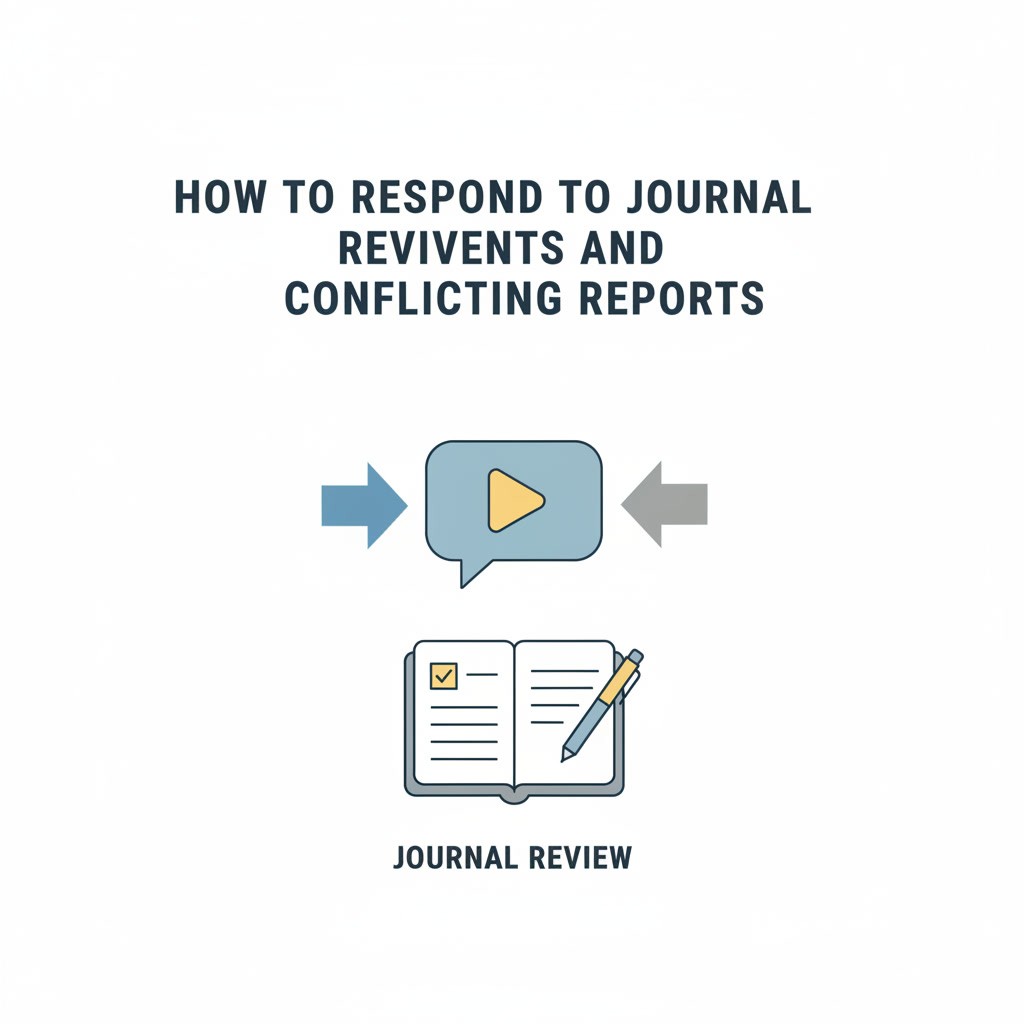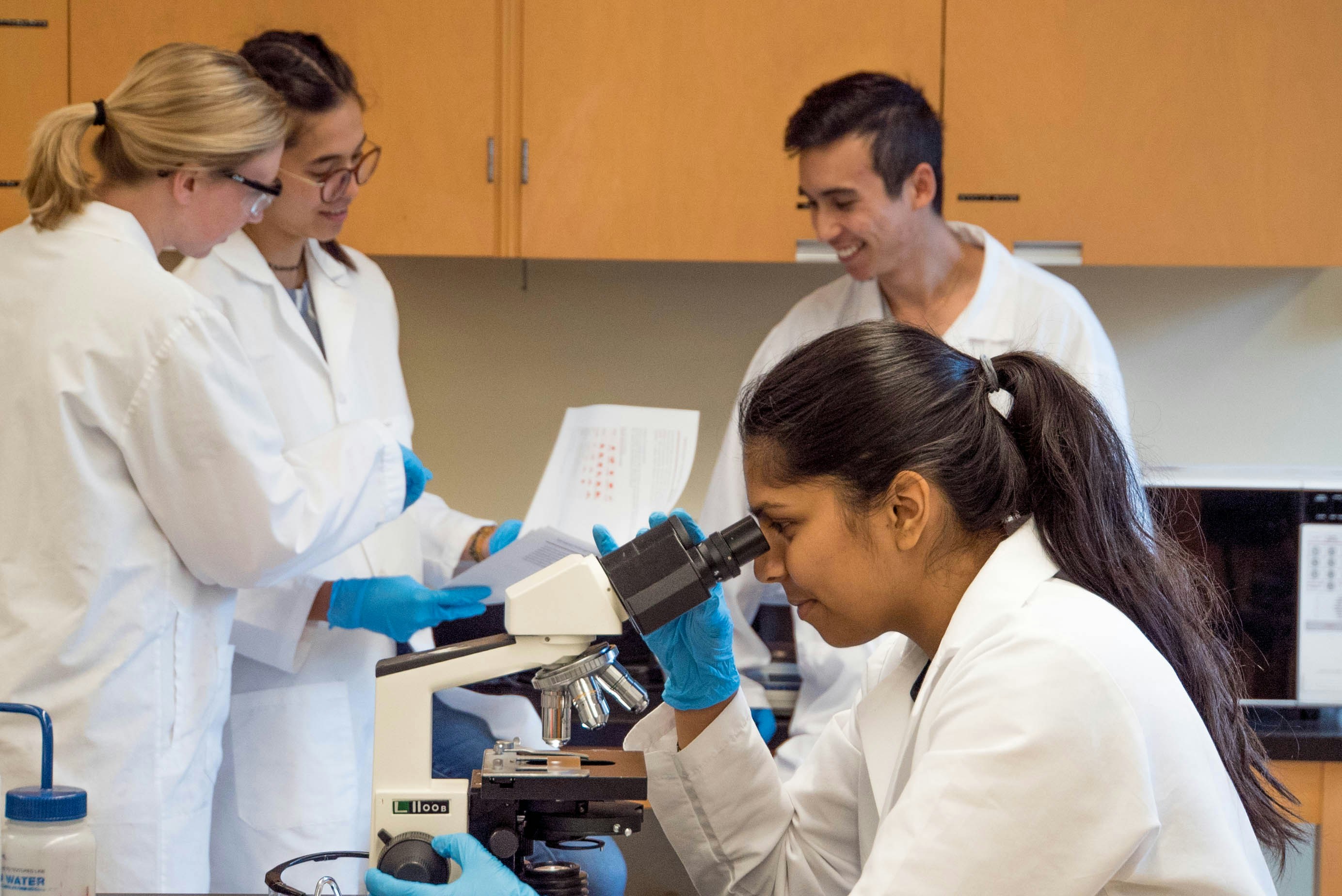How to Write a Research Hypothesis: Steps & Examples
Crafting a research hypothesis is an essential skill for PhD students. A strong hypothesis is a concise, testable prediction that grows out of prior evidence and theory, then guides study design and analysis.
This guide shows you exactly how to write a research hypothesis. You will learn the main hypothesis types you can choose from, a short method to move from question to testable claim, discipline-specific examples, and common pitfalls to avoid. Throughout the article, we point you to related resources to help you refine your hypothesis and improve your draft.
Research Hypothesis Definition and Purpose
A research hypothesis translates curiosity into a testable claim. It specifies how an independent variable influences a dependent variable in a defined population, ensuring that your study addresses a clear question and contributes to existing scholarship.
Hypotheses also guide readers to the theoretical frame and statistical methods you will use. To place your hypothesis effectively, see our guide to the IMRaD structure.
Research Hypotheses vs Research Questions vs Predictions
A research question frames the issue you want to study—for example:
“How does parenting style affect children’s empathy?”
It points you toward relevant literature and theory but does not propose a testable claim.
A hypothesis answers the causal question by stating the expected relationship:
“Children who experience authoritative parenting will score higher on empathy measures than children who experience non‑authoritative parenting.”
A prediction, in turn, describes what you expect to observe if the hypothesis is true—for instance:
“If authoritative parenting promotes empathy, then children with such parenting will show higher empathy scores in observational tasks”.
This distinction matters because predictions follow from hypotheses, and hypotheses must rest on theory and prior evidence.

Making Your Research Hypothesis Testable with PICOT
To be meaningful, a hypothesis must be testable. A testable hypothesis requires two variables. For an experimental procedure to be considered truly research, it should state a hypothesis. Formalised hypotheses use “if…then” structures to express the relationship and expected outcome.
Testability also means the variables must be operationalised: you should specify the population you are studying and how each variable will be measured. The PICOT framework is a widely used framework for writing a hypothesis to ensure clarity.
For example:
Population – adolescents participating in an attachment study.
Interest/Intervention – being classified with disorganised attachment.
Comparison – being classified with secure attachment.
Outcome – peer aggression scores measured using a validated scale.
Time – a defined assessment period, such as the end of the school year.
Using these elements, you might write:
“Adolescents with disorganised attachment have higher peer aggression scores at the end of the school year than adolescents with secure attachment.”
Notice the present tense and clear variables, and how the population, comparison, and time frame are specified
Types of Research Hypotheses (With Examples)
Null and Alternative Hypotheses
In statistical testing you need both a null hypothesis (H0)—which states that there is no relationship or difference—and an alternative hypothesis (Ha) that describes the expected relationship.
For example, consider a retrospective study on unintentional ingestions in children: the researchers hypothesised that socio‑economic status (SES) influences whether a case is referred to Child Protective Services (CPS).
The null hypothesis is that SES does not influence the likelihood of CPS referral, while the alternative hypothesis predicts that children from lower‑SES families are more likely to be referred. Writing both statements ensures clarity in statistical testing.
Directional vs. Nondirectional
A directional hypothesis specifies the expected direction of an effect. For example, in the field of developmental psychology, you might hypothesise that adolescents with disorganised attachment show higher levels of peer aggression than adolescents with secure attachment. This is directional because it predicts a specific direction.
A nondirectional (2-sided) hypothesis would simply posit that attachment style is associated with peer aggression without stating which group scores higher.
Two‑sided (nondirectional) hypotheses are preferable unless strong theory or evidence justifies a one‑sided prediction
Simple vs. Complex
A simple hypothesis involves one predictor and one outcome. For example, using data from the Child Protective Services (CPS) referral study, a simple hypothesis would be:
Children from the lowest socio‑economic status (SES) group have higher odds of CPS referral after unintentional ingestions than children from middle and high SES groups.
This statement has one predictor (SES group) and one outcome (referral status).
A complex hypothesis involves multiple predictors or interactions. For instance,
The association between SES and CPS referral is moderated by triage acuity such that SES effects are stronger in cases with higher acuity levels.
Complex hypotheses require more elaborate study designs and statistical analyses.

Different hypothesis types and examples drawn from developmental, sociological and medical studies.
Other Hypothesis Classifications
Hypotheses can also be descriptive, comparative or relationship‑based.
A descriptive hypothesis suggests potential differences without implying causation. For example, drawing from the CPS ingestion study, you might suggest that:
“Referral rates to Child Protective Services vary across ingestion types such as household products, prescription drugs, and illicit substances among children under six. “
A comparative hypothesis predicts differences between two or more groups. For example:
“Regions with school‑based mental health programs experience lower rates of rampage violence than regions without such programs.”
A relationship‑based hypothesis predicts a correlation between variables without specifying causation—for instance:
“Lower social support is associated with greater reliance on maladaptive defence mechanisms among LGBTQ+ adolescents.”
These classifications help researchers choose the appropriate statistical analysis and wording.

How to Write a Research Hypothesis: Step-by-Step

Step-by-step method to write a testable research hypothesis.
Conduct a focused literature review
Before you draft your hypothesis, read widely on your topic to identify gaps in knowledge. Our Step‑by‑Step Literature Review Guide explains how to scan existing literature, organise it and refine your research question.
Avoid forming hypotheses from data mining; instead, let theory and prior studies guide you.
Use thesify’s PaperDigest and Semantic Search to scan recent sources and save key items to a collection for quick citation later.
2) Name the Variables Precisely
Define variables and population using PICOT. Identify the population, intervention or exposure, comparison group, outcome and time frame. This step helps you operationalise variables and ensures your hypothesis is specific and testable.
3) Choose Your Hypothesis Type
Decide whether your hypothesis should be null vs. alternative, directional vs. nondirectional, simple vs. complex or another classification.
Justify the choice based on existing theory or evidence
4) Draft, Test for Falsifiability and Refine
Write the hypothesis in the present tense and avoid judgemental or vague language.
Specify the independent and dependent variables and ensure they can be measured.
Use clear terms so that someone else could replicate your study.
If necessary, revise to remove ambiguity.
5) Write a Null Hypothesis
Formulate a null statement that directly opposes your alternative hypothesis. This allows statistical tests to evaluate whether the observed effect is likely due to chance
Research Hypothesis Examples Across Disciplines
Below are field-specific hypotheses examples that you can adapt in your own research to assure you have a well written hypothesis. Moreover, the examples will illustrate how various hypotheses can be written on the same topic, thus steering possible research design in different directions.
Example Psychology Hypotheses
As an example, imagine you are writing a hypothesis within the field of developmental psychology research and want to examine how parenting styles, social support and personal traits influence social, emotional and cognitive outcomes.
Drawing on these themes, here are three example hypotheses:
Attachment and peer aggression (directional hypothesis):
Adolescents with disorganised attachment will score higher on peer‑aggression measures than adolescents with secure attachment.
This hypothesis identifies the population (adolescents), independent variable (attachment style), dependent variable (peer aggression) and predicts a specific direction. You would test this by administering standardised attachment interviews and aggression scales and comparing mean scores.
School support and perceived belonging (directional hypothesis).
LGBTQ+ teens in schools with weekly support groups will report higher perceived belonging and lower anxiety after 12 weeks than LGBTQ+ teens without such groups.
The underlying research question should ask whether school‑based support influences social and emotional outcomes. The null hypothesis would state that no difference exists between the groups.
Therapy access and maladaptive defences (directional hypothesis).
Adolescents offered school‑based therapy will show reduced use of displacement and other maladaptive defence mechanisms at post‑test compared with their baseline scores and with a matched control group.
This hypothesis should be drawn from the paper’s discussion of coping and emotional regulation. It proposes a specific intervention (school‑based therapy) and outcome (use of maladaptive defences), and predicts the direction of change.
Example Social Sciences Hypotheses
For example, if you are in the field of sociology researching rampage violence cases in the US, you might generate hypotheses about risk factors for mass violence. For example:
Media coverage and copycat effects (relationship‑based hypothesis):
The amount of sensationalised media coverage of rampage violence is positively associated with the frequency of subsequent mass shootings within a six‑month period.
The null hypothesis asserts no association between coverage and subsequent events. Testing this hypothesis would involve content analysis of media reports and time‑series analysis of shooting incidence.
Mental health support and rampage incidents (directional hypothesis):
Regions with greater school‑based mental health resources experience fewer incidents of rampage violence than regions with limited resources.
This comparative hypothesis could be operationalised by measuring the number of counsellors per student and comparing incident rates across regions.
Social isolation and perpetrator profiles (probabilistic hypothesis):
Perpetrators of rampage violence are more likely to have histories of social isolation or rejection than the general population.
This hypothesis would be tested by comparing documented social histories of perpetrators with those of matched controls.
Example Biomedical/Clinical Hypotheses
To illustrate examples of medical research hypotheses, we will draw on the study Evaluating bias of child maltreatment referrals in encounters for unintentional ingestions, which analyses referrals from unintentional ingestions in children under six. Hypotheses could include:
SES and CPS referrals (directional hypothesis):
Children from the lowest socio‑economic status (SES) group have higher odds of CPS referral after unintentional ingestions than children from middle and high SES groups.
The null hypothesis posits no association between SES and referrals.
Race/ethnicity and CPS referrals (nondirectional hypothesis):
CPS referral rates differ across racial/ethnic groups among children presenting with unintentional ingestions.
Since prior evidence is mixed, a two‑sided hypothesis is appropriate.
Acuity and CPS referrals (complex hypothesis):
The association between SES and CPS referral is moderated by triage acuity such that SES effects are stronger in cases with higher acuity levels.
This complex hypothesis involves an interaction between two predictors.
Common Mistakes When Writing Research Hypotheses
Confusing predictions with hypotheses:
A prediction follows from a hypothesis and describes what will be observed; it is not a hypothesis itself. Always base your hypothesis on theory and evidence.
Vague or immeasurable variables:
Avoid terms like “better” or “improved” without specifying how you will measure improvement. Use validated scales or clearly defined metrics.
Using future tense or modal verbs.
Hypotheses should be stated in the present tense and avoid words like “may” or “will”.
Including personal opinions or value judgements.
Hypotheses must be objective; do not include language that implies moral evaluation.
Data‑driven hypotheses.
Do not generate hypotheses by fishing through data; formulate them before data collection and let them guide your study design.
Failing to state the null hypothesis.
Without a null hypothesis you cannot properly conduct statistical tests.
Key Takeaways for Writing a Research Hypothesis
A research hypothesis is a precise, present‑tense statement that predicts a relationship between variables and is grounded in prior research.
Use the PICOT framework to ensure your hypothesis specifies the population, interest/intervention, comparison, outcome and time.
Different types of hypotheses (null/alternative, directional/nondirectional, simple/complex) serve different purposes; choose based on theory and evidence.
Write the null hypothesis alongside the alternative to facilitate statistical testing.
Always draft your hypothesis before collecting data to avoid bias and ensure your research question drives the study.
Testability, clarity, and objectivity are hallmarks of a good hypothesis; avoid vague language and future tense.
Frequently Asked Questions About Research Hypotheses
What is the difference between a research question and a hypothesis?
A research question identifies what you want to explore, whereas a hypothesis answers that question with a testable claim.
For example, the question “Does attachment style influence peer aggression?” becomes the hypothesis “Adolescents with disorganised attachment score higher on peer aggression measures than adolescents with secure attachment.”
This illustrates how the hypothesis articulates a specific relationship using the variables and population from the question.
2. How do I decide between a directional and nondirectional hypothesis?
Use a directional hypothesis when prior theory or research strongly suggests the direction of an effect. If evidence is mixed or absent, choose a two‑sided (nondirectional) hypothesis.
3. Do qualitative studies use hypotheses?
Many qualitative studies are driven by research questions rather than formal hypotheses; however, some qualitative researchers articulate propositions that guide data collection and analysis. When qualitative studies use hypotheses, these are often exploratory and flexible.
4. Why must hypotheses be written in the present tense?
Hypotheses state what you expect given current knowledge; writing them in the present tense clarifies that the relationship is being tested now rather than speculated for the future.
5. What is the PICOT framework?
PICOT stands for Population, Interest/Intervention, Comparison, Outcome and Time. Using PICOT ensures that your hypothesis identifies who or what you are studying, what you are examining, the comparison group, the expected outcome and the time frame.
6. How do null and alternative hypotheses relate to statistical tests?
The null hypothesis asserts no difference or relationship, while the alternative describes the expected effect. Statistical tests evaluate whether you can reject the null and accept the alternative.
7. Can a hypothesis change during a study?
While the conceptual hypothesis may evolve as you learn more during a literature review, it should be finalised before data collection begins. Adjusting a hypothesis after seeing the data undermines the validity of statistical tests and increases the risk of false positives.
Get Hypothesis Feedback with thesify
Upload a page of your introduction or research design to thesify and generate a Pre-Submission Review. This report highlights areas where your hypothesis could be clearer or more testable. Then, use Chat with Theo to ask follow‑up questions and refine your wording.
Related Posts
How to Do Research for a Paper: A Practical Guide: Thoughtful research is the cornerstone of any academic paper. Learn how to do research for a paper in 8 steps: plan your topic, frame a question, build keywords, search databases, evaluate sources, and organise evidence. This post offers comprehensive research paper preparation and research steps summary. You’ll get a research strategy that allows you to narrow a broad subject into a workable topic and initial plan.
How to Write a Literature Review: 9 Expert Tips | thesify: Unlike an annotated bibliography, which summarizes individual sources separately, a literature review analyzes the relationships between them—highlighting key debates, identifying gaps, and demonstrating how studies build upon or challenge one another. This guide explains the importance and purpose of a literature review, highlights the relevance of comprehensive literature analysis in academic research, unpacks the literature review structure, and offers a step-by-step guide to writing a literature review.
The Typical Structure of a Scientific Research Paper: For authors, using the IMRaD format brings discipline and coherence to the writing process. Each section has a defined purpose, which makes it easier to organize your argument and present findings in a persuasive and academically rigorous way. For journals and peer reviewers, IMRaD improves efficiency by creating predictable expectations around structure and content. Get a detailed breakdown of scientific paper sections and learn what to include in which parts of a research paper in this post.


















